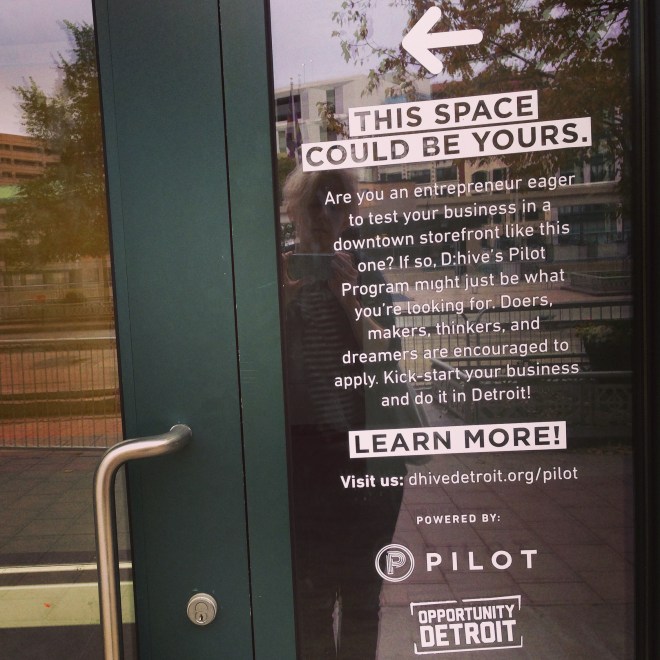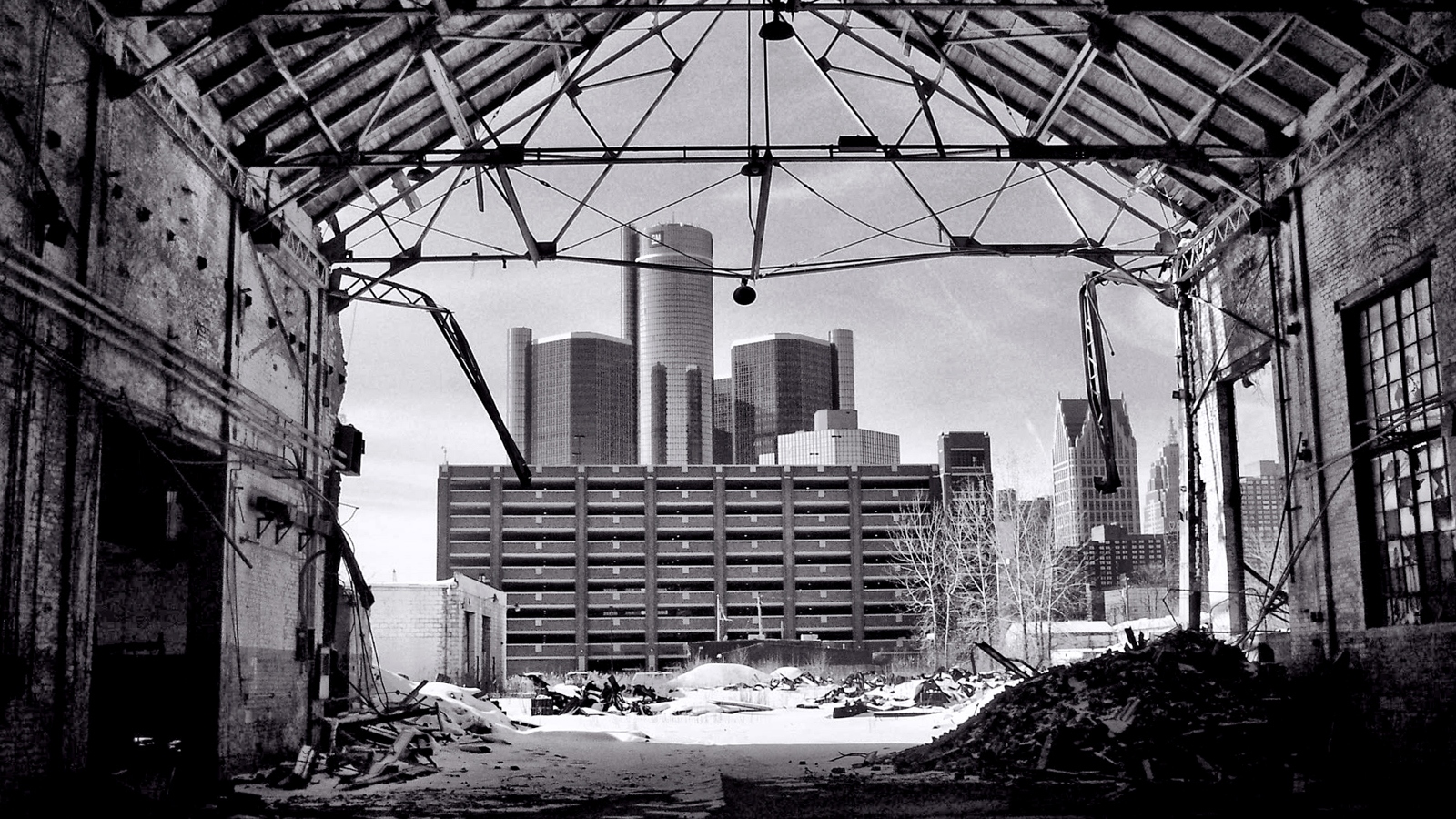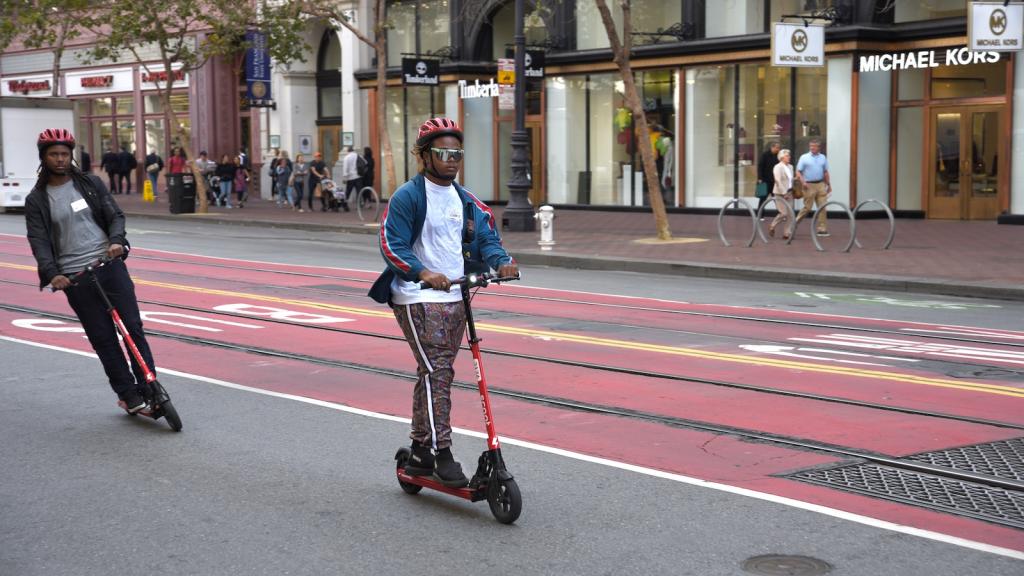â
We were all here in Detroit for the Meeting of the Minds conference, which convened businesspeople, tech people, city planners, politicians, and community activists together in one space to spout platitudes about smart meters, city data, community-oriented initiatives, and stormwater management — and then to get real with each other over drinks.
The day before, news had broken that the ambitious Downtown Project in Las Vegas, which set out to re-urbanize a square mile of Las Vegas’ long-abandoned downtown, had just laid off one-third of its 90-person staff. Tony Hsieh, the Zappos founder and tech wunderkind who had created the project from nothing with $350 million of his own money, had resigned. We would soon find out that the Downtown Project had been keeping hush-hush about the fact that, in the last two years, three of its entrepreneurs had killed themselves — despite the project’s employment of a full-time “Pixie of Positivity.”
What did this have to do with Detroit? The ballroom we occupied was in the Book Cadillac Hotel, which, in 1924, had been the tallest, and arguably one of the most glamorous, hotels in the world. By 2000, it had become a cavern of drooling plaster and water damage. I knew it from websites maintained by the kind of people who haunted the city’s abandoned buildings, took photographs and wrote hyperbolic prose about the tragedy that was Detroit. Now, just like that, it was fancy again.
Arguably, the Book Cadillac didn’t care whether it was falling over or not, but we were enjoying standing on its structurally sound floor, eating sushi, and talking about Detroit’s own tech-moneyed billionaire tycoon. “Can we just,” says one of the community activists, “go five minutes without talking about Dan Gilbert?”
“Dan Gilbert,” chants the rest of the table. “Dan Gilbert. Dan Gilbert. Dan Gilbert.”
One of the myths of Detroit is that it’s a frontier town — wide open, and a place where anyone can make a mark. Like a lot of frontiers, though, fences have already been laid, even if you can’t see them. Much of the downtown that is south of Adams Street is owned by Dan Gilbert. Gilbert made his fortune by starting Rock Financial, an internet-based mortgage company. He sold it to Intuit in 1999, at the peak of the first dot-com boom, for $532 million, and then, after the bubble burst, bought it back for $55 million. By then Intuit had renamed it Quicken Loans, which it’s still called today.

Heather Smith
The Book Cadillac is one of the few buildings around me that Gilbert doesn’t own — at last count, he owned 60 downtown, including most of the buildings lining Woodward Avenue. The One Woodward — an elegant, spindly skyscraper that looks like what Barbarella would conduct business out of? Gilbert owns it.

Heather Smith
The remnants of the old Madison theater? Gilbert owns it. He has renamed it the “M@dison Building” and re-envisioned it as a tech incubator, making it either the linchpin of “WEBward Avenue” or “Woodward 2.0,” depending on which promotional copy you’re reading. Chase Tower, the austere minimalist marble structure designed by Albert Kahn? Gilbert bought it, renamed it the “Qube” and decorated the inside look like what Quicken’s publicity department enthusiastically describes as “a mortgage-banking Candyland.” The old Meyer Jewelry headquarters, which is still covered in brass treasure chests from Detroit’s more flush, blinged-out days? It’s Gilbert’s now.
Gilbert has moved Quicken headquarters downtown. He still lives in the suburbs, but he’s provided mortgages and rent subsidies to employees who are willing to move into the city. One of the conditions of accepting money from Detroit Venture Partners, Gilbert’s venture capital firm, is agreeing to relocate to Detroit and set up shop in one of his properties. Walking around downtown during business hours, you get the feeling that someone has assembled a collection of young white men in v-neck sweaters and stylish eyeglasses and scattered them over the urban street grid. That someone would be Dan Gilbert.
Gilbert has installed free security cameras in every local storefront that is willing to let him, and he’s hired a private security force that patrols downtown and responds to calls in three minutes. He has monthly meetings with the sheriff and the chief of police. He’s put up money to run a light-rail line down Woodward Avenue. People in Detroit talk about Gilbert like he’s the Wizard of Oz, and that might be the closest analogy. He may be a land-hungry billionaire — but he’s the most civic-minded land-hungry billionaire the city has seen in a long time.
By contrast, much of southwest Detroit is owned by Matty Moroun, best known for being the only person to own a major American border crossing, and most of downtown north of Adams Street is owned by Mike Ilitch. Ilitch, who made his fortune founding the Little Caesars Pizza chain, operates in a manner that is more old-fashioned slumlord. Ilitch buys property, often secretly, and lets it decay, so that it brings down the value of the property around it. Then he buys the neighboring property, and lets it run down too, so that he can buy even more property, until he’s amassed enough blighted property to go for the end stage.
The end stage is persuading the city to put up enough funding so that he can raze the entire area and put in the kind of flagship property — most recently, a new Red Wings stadium surrounded by market-rate housing and retail — that shakes down the big redevelopment dollars. When I arrive, the 45 blocks that have been cleared for the new project, called District Detroit, is an impossibly long stretch of rubble, with a billboard hovering over it. “Imagine,” the billboard says, “a place.”
This is why Detroit can’t get over Dan Gilbert. He buys buildings and instead of letting them rot and turning them into parking lots for suburbanites driving into the city to see a game at the ballpark, he fixes them up. People still can’t get over the novelty. “He could die tomorrow,” one shopkeeper told me, “and the city would still come out ahead.”
But the thing that makes Dan Gilbert a big player in Detroit — his ability to buy and rehab large buildings — is novel because not many other people can. While it’s possible to buy a house for as little as $500 through a city, county, or state auction, it’s nearly impossible to get a loan to, say, pay out $6,000 for a new boiler, or the $10,000 to replace a roof. It’s even harder to secure the kind of financing that would rehabilitate a commercial or apartment building. This is a key reason why Detroit’s buildings have fallen into so much disrepair over the years. The villains, as George Galster, a professor in urban studies at Wayne State University and a fifth-generation Detroiter, put it, “are the rules of the game.”
Dan Gilbert might believe in Detroit, but Quicken Loans and most banks in the area do not. I talked to one Detroit resident who had loaned $20,000 to a friend who had bought a house, but couldn’t carry out the renovations the house needed. Now the friend was moving, and he was trying to buy the house he’d helped rehab — but he had just been turned down for a loan to do so by Quicken. Building a house on farmland at the edge of the suburbs is still considered a safer bet than building or rehabbing a building within Detroit’s borders.
Will “the 7.2” — as the section of downtown that Gilbert has focused his energies on is known — do better than Hsieh’s one square mile of Las Vegas? Real estate values are rising within the 7.2, to the point where the low-income senior citizens who have been downtown’s most stable population are being evicted by developers. It’s entirely possible that even if Gilbert manages to transform the 7.2 into a thriving commercial district, it will exist as a bubble of relative prosperity without much effect on the larger city, like the neighborhoods of Indian Village, Palmer Woods, and Sherwood Forest (which, like the 7.2, pay for their own private security).
Meanwhile, the storefronts along Woodward are still almost completely empty. Gilbert has talked about reviving the high-end shopping district that Woodward Avenue was before the 1960s.

So far, Moosejaw, a fancy athletic goods store, is the only anchor of this new district — along with a store that sells Detroit memorabilia, but only opens when there’s a game playing at one of the stadiums.
Moosejaw is usually empty except for its two employees and one security guard. They sometimes play beanbag toss with each other on the sidewalk in front of the shop. Whenever they see me walk by, they yell cheerfully for me to come back into the store. I feel guilty because they seem bored, but I don’t need a $400 parka right now. I suspect the rest of Detroit, what with its $23,600 median income, doesn’t either.
The downtown businesses that appear to be legitimately bustling, day in and day out, are working-class dives like the Lafayette Coney Island, a lively 24-hour diner that has managed to stay open at the heart of downtown since 1917, despite having chili fries that taste like napalm.
In the last few years, there’s been a lot of talk about the unequal distribution of capital in the United States — the wealthiest 1 percent of Americans receive 20 percent of the income earned across the country. The effects of this have been many and varied, but one of them has been the creation of a new class of philanthropists who can shift the policy winds in any realm that interest them with the sheer force of their jingling moneybags. Tom Steyer and Michael Bloomberg have done this with climate change. Bill Gates has done this with public health and education. Dan Gilbert and Tony Hsieh are now doing this with downtown urban revival.
As long as we have had billionaires, we have had their ideas about what is good for society. In 1917, Henry Ford decided to apply his energies and his money towards bringing about world peace, which didn’t go well, and then towards informing the world that he had decided that it was the Jews who were holding back world peace. That went even less well. Another industrial tycoon, Andrew Carnegie, took his fortune and built 1,689 public libraries, which was better.
Detroit deserves more than to lie in wait like some kind of fairytale princess for a real estate tycoon to come along and spruce her up. But until someone other than a Dan Gilbert can afford to buy and fix up buildings that are down on their luck, that seems to be the way the game is played.



